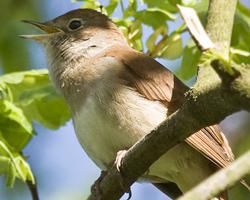
Váhy a míry
| Délka | od 12 do 13 cm |
|---|---|
| Hmotnost | od 12 do 15 g |
| Délka rozpětí křídel | od 22 do 24 cm |
Popis zvířete
The European Pied Flycatcher (Ficedula hypoleuca) is a small, strikingly marked passerine bird that belongs to the Old World flycatcher family Muscicapidae. This species is particularly noted for its distinctive plumage and its remarkable migratory behavior, which captivates bird enthusiasts and researchers alike.Adult males in their breeding plumage are the most conspicuous, boasting a remarkable contrast of black and white feathers. The upper parts, including the back, wings, and tail, are primarily black with a glossy sheen, while the underparts are a stark, clean white. This dramatic coloration is complemented by a small but conspicuous white patch on the forehead, just above the beak, which gives the species its "pied" descriptor. The wings feature a notable white bar that becomes visible in flight. In contrast, females and juveniles display a more subdued coloration, with their upper parts being a dark brown and the underparts a lighter, off-white or cream, making them less conspicuous than the males.
The European Pied Flycatcher is a small bird, measuring about 12-13.5 cm in length, with a wingspan of 21-24 cm. It has a relatively light build, weighing between 12 to 19 grams. Its size and agility make it an adept aerial hunter. The species is insectivorous, feeding primarily on a diet of flies, moths, and other small invertebrates. Its hunting technique is as dynamic as it is efficient; the bird often catches its prey in mid-air in quick, acrobatic flights from a perch.
Breeding mainly occurs in mixed and deciduous forests across Europe and western Asia, with a preference for areas rich in old trees that provide suitable nesting cavities. The European Pied Flycatcher is a cavity nester, often utilizing natural holes in trees or even taking over the abandoned nests of other birds. Remarkably, this species is also known to readily adopt nest boxes where available, facilitating studies on its breeding habits and population trends.
The breeding season sees males fiercely defending their territories through vivid displays and a repertoire of melodious calls, aimed at attracting females and warding off rivals. After mating, the female lays a clutch of 5 to 6 eggs, which she incubates for about two weeks. Both parents are involved in feeding the chicks, which fledge approximately two weeks after hatching.
One of the most fascinating aspects of the European Pied Flycatcher's life cycle is its migratory behavior. The species is a long-distance migrant, with individuals breeding in Europe and western Asia and wintering in sub-Saharan Africa. This annual journey is a testament to the bird's remarkable endurance and navigational skills.
Despite facing threats from habitat loss and changes in climate that affect its migratory patterns and breeding success, the European Pied Flycatcher is currently listed as Least Concern by the IUCN Red List, thanks to its wide distribution and large population. However, ongoing monitoring and conservation efforts remain crucial to ensuring the stability of this captivating species.
Podobná zvířata
Nové fotografie zvířat
Top 10 zvířat
- Dolphin gull (Leucophaeus scoresbii)
- Diana monkey (Cercopithecus diana)
- Moustached guenon (Cercopithecus cephus)
- Galápagos tortoise (Geochelone nigra complex)
- Japanese macaque (Macaca fuscata)
- Russian tortoise (Testudo horsfieldii)
- Stone loach (Barbatula barbatula)
- Greek tortoise (Testudo graeca)
- Common flying dragon (Draco volans)
- Vendace (Coregonus albula)


